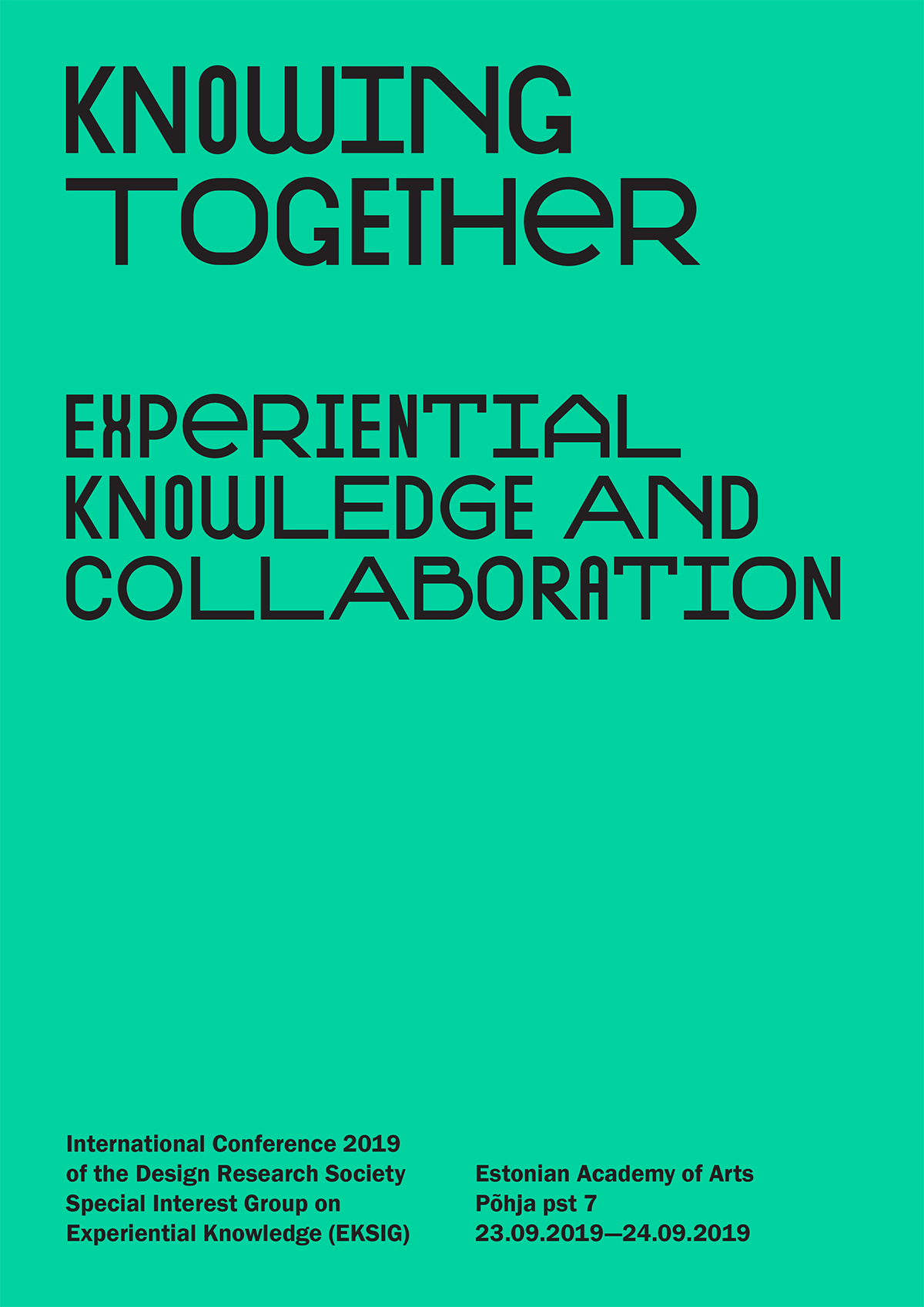Knowing Together — experiential knowledge and collaboration (EKSIG 2019)
Editors: Nithikul Nimkulrat, Kristi Kuusk, Julia Valle Noronha, Camilla Groth and Oscar Tomico
conference proceedings, 2019
Creative practice has transformed from one based on the production of material artefacts to one that engages expertise and knowledge from multiple disciplines. Recent research in the creative disciplines has revolved around the changing territorial context of ‘making’ (Ingold, 2013; Sennett, 2008) and has increasingly involved professionals and academic researchers working collaboratively to explore an interdisciplinary inquiry (Plattner, Meinel & Leifer, 2018). Collaboration in such research has therefore become vital. A research team may comprise different disciplinary experts, such as scientists, technologists, artists, designers, architects, psychologists, business strategists and policy makers, working across academic, commercial and public sectors (e.g. Bowen et al., 2016; Nimkulrat & Matthews, 2017). They may work with materials and/or non-materials. Examples include research in the fields of New Materials, Smart Textiles, Virtual Materiality, Material Innovation, Embodied Ideation, and Participatory Practices in Business in which various partners are in dialogue, developing, consolidating and enhancing knowledge while generating new opportunities for interdisciplinary knowledge exchange.
This conference therefore examines collaboration within research teams of professionals/researchers and members with other diverse disciplinary expertise. Collaboration here is interpreted in the widest possible sense to include any kind of working together. This is to understand how individual experiential knowledge — or knowledge gained by practice — is shared, how collective experiential knowledge is accumulated and communicated in and through collaboration, and how it is embodied in the outputs and may be traced back to the origin of the practice. The conference also aims to illuminate ‘making’ as the action of change in which matter and materials are transformed through collaboration, interaction or negotiation between the collaborative team and their material and non-material environments.
References
Bowen, S., Durrant, A., Nissen, B., Bowers, J. & Wright, P. (2016). The Value of Designers’ Creative Practice within Complex Collaborations. Design Studies, 46, 174-198. doi: 10.1016/j.destud.2016.06.001.
Ingold, T. (2013). Making: Anthropology, Archaeology, Art and Architecture. London, UK: Routledge.
Nimkulrat, N. & Matthews, J. (2017). Ways of Being Strands: Cross-Disciplinary Collaboration Using Craft and Mathematics. Design Issues, 33(4): 59-72. doi: 10.1162/DESI_a_00461.
Plattner, H., Meinel, C. & Leifer, L. (eds.) (2018). Design Thinking Research: Making Distinctions: Collaboration versus Cooperation. Cham, Switzerland: Springer.
Sennett, R. (2008). The Craftsman. New Haven, London: Yale University Press.
(download conference proceedings)
Suggested Citation: Nimkulrat, N., Kuusk, K., Valle Noronha, J., Groth, C. & Tomico, O. (eds.) (2019). Knowing Together — experiential knowledge and collaboration. Proceedings of International Conference 2019 of the Design Research Society Special Interest Group on Experiential Knowledge (EKSIG 2019). Tallinn, Estonia: Estonian Academy of Arts.
